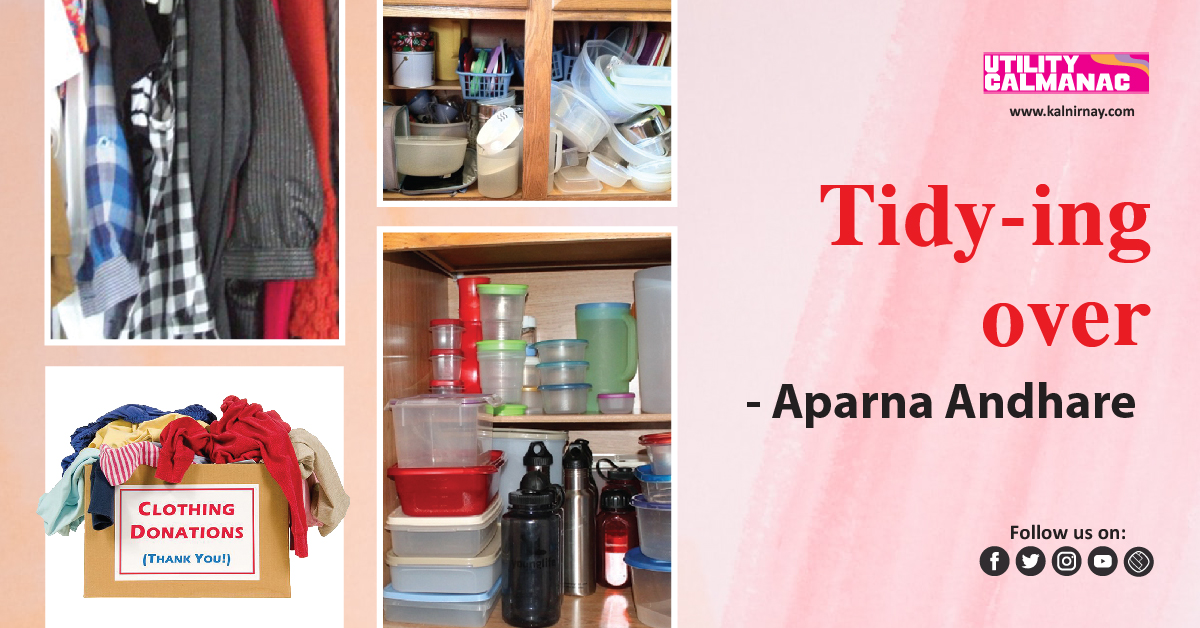Tidy-ing over (clutter-free)
A tough resolve and some serious organising skills are all you need to stop fighting the mess for once and for all…
We’ve all helplessly stared at a closet full of clothes or pulled everything out of a drawer to (unsuccessfully) look for a document/cable/earring. Even if you are organised and have a neat system that works, maybe you have looked at pictures of minimalist houses — pristine, not a speck of dust — and wanted one for yourself. In theory, the process is simple, examine your possessions, assess your needs, and get rid of extra stuff. Put everything away, and live your best life, clutter-free. However, real life and needs get in the way of this, and even the thought of tidying a room, let alone a house, starts to feel overwhelming.
The clean-up industry is making its presence felt with the Japanese tidying expert Mari Kondo turning into a global sensation. She devised the ‘Kon Mari Method’— a tidying technique that can feel meditative and spiritual. Kondo or not, as you set out on your cleaning spree, what you need is a ‘can-do’ spirit!
Now that you’re on your way to a tidy space, start with a deep breath and make categories of your items — clothes, cosmetics, electronics, books and stationery, kitchen utensils, linen, cleaning supplies etc. The idea is to tackle one category at a time, evaluating what you need, and things you can live without. It takes courage, patience and plenty of restraint to put things into the discard pile with mighty conviction and determination! If you haven’t used something in the last couple of years, chances are that you won’t use it ever again. You might feel tempted to keep an old outfit that encourages you to lose weight. But ask yourself — does this inspire me or is it just a guilty reminder of my failed fitness dream? As you clear out clutter, perhaps you will also shed some emotional baggage.
You must work fast — designate a weekend— and finish the tidying up before you’re tired and/or bored with the exercise. Ask yourself why you want to tidy up — you might be moving homes, your lifestyle might have changed, or you might want to make an effort to live more meaningfully. This process will help you discover things long forgotten, things buried in the loft, out of your reach. When Döstädning (Swedish Death Cleaning) was offered by Margareta Magnusson as a tidying tool, it felt morbid — something meant for the elderly. However, the pandemic has been a stark reminder of the unpredictable morbidity surrounding us. The lockdown forced most of us to stay home, with limited access to certain things. This pandemic has given us a detached perspective on the uncertainty of life. It has made it easier to prioritise things that have real value over the mindless stuff that only crowds our space.
As you work your way through your categories, assign places to objects. ‘A thing in its place and a place for everything has to be your mantra. This will also help you understand your space, making it easier for you to devise a system that enables you to keep the space in top shape.
After a comprehensive survey of tidying practices, it appears that experts agree on a few things:
1. To stay clutter-free, it is important to understand what we have and need. Most of us will have too many things, to begin with. We will have to pare down and discard what we don’t need. Experts suggest starting with clothes since it is easier to be objective about keeping or discarding them. Slowly make your way to items of sentimental value.
2. Categorisation of things is crucial because it helps you implement and maintain your organising system. This system will evolve with your needs over time, but it is important to stay on track for a while before abandoning the technique.
3. To tidy once is easy but to keep the house tidy is the real challenge. This long-term change comes from designing systems that work for the individual and making keeping things in order a habitual part of life, like brushing one’s teeth.
It is evident that the key to a clutter-free house is having only what you need, and things you can designate a place for. So what do you do with the ‘discard’ heap? E-waste needs to be responsibly recycled. There are plenty of NGOs who will gratefully receive items in good shape (please don’t “donate” things that are torn). Sort things out and let them go. A Kon Mari tip that struck me for its sensitivity was her treatment of discarded items. It is tempting to give unused or rarely used things to family and friends but she asks us to not burden the receiver with an obligation to take and use our things. We need to choose what to ‘gift’ and in our turn, decide mindfully what to receive and bring into our own home.
The internet is bursting with tips and hacks on how to lead a clutter-free life. Ironically, the ‘clean-up’ industry has become quite cluttered. Some recommend an intensive session, while others recommend 15 minutes a day. A new industry around tidying up has mushroomed — books, containers, stick-on labels, consultants and whatnot. As we make our way, accepting or discarding tips (including the ones in this article), we have to remember — we are all unique as are our specific needs. It is best to decide for ourselves and to modify, fine-tune, and sometimes even discard strategies. A tidy house, however pleasant, is not a character certificate. Sometimes, in a crazy world, it helps to embrace our chaos.
To read more English blogs, visit our blog section.
Aparna Andhare

